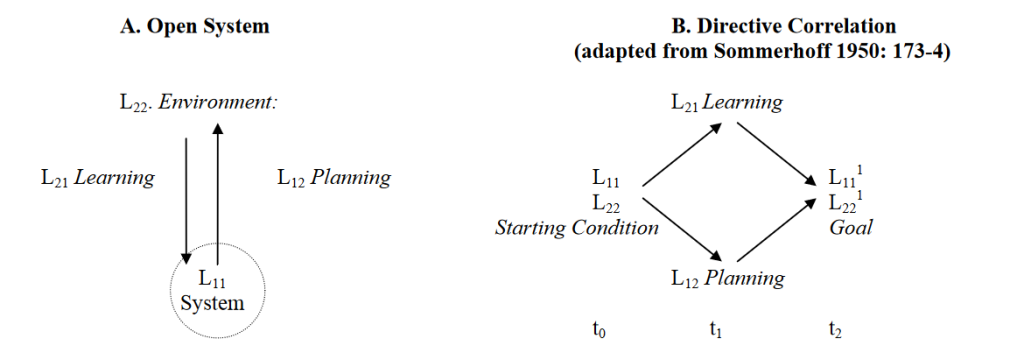The external social environment is constantly changing, people’s beliefs, values, and expectations shift rapidly, affecting the decisions they make. This environment produces discontinuous change, making it feel like the ground is shifting beneath our feet. How does this inform the decisions we take in an organisational context.
The defining characteristic of the Open Systems Theory is that the system of work exists within a context. Changes to the world we live in inform the decisions we make. The problem with most systems models and frameworks we have worked with is that they are applied without context. Often it is left to the change practitioner to bring their own nuance to the change they are implementing. OST starts with the environment and how it affect the system and considers the likely and best possible futures for the system within the environment.
In OST technical language the system and environment is framed in the idea of ‘lawful’ relationships (L). As we are primarily interested the environment we define the system we are concerned with as L11. When considering the environment we define it as L22. Why the double digits? It is to show that the relationships and interactions are within the system i.e. L1 interacting with itself L1, hence we describe the system as a set of internal interactions L11.
This allows us to define the relationships between the system and the environment in technical language too. The influence of the environment on the system can be defined as L21, whereas the influence of the system on the environment is L12.

Imagine from “OPEN OR CLOSED SYSTEMS? BRIDGING THE GAP” – Merrelyn Emery (February, 2012)
